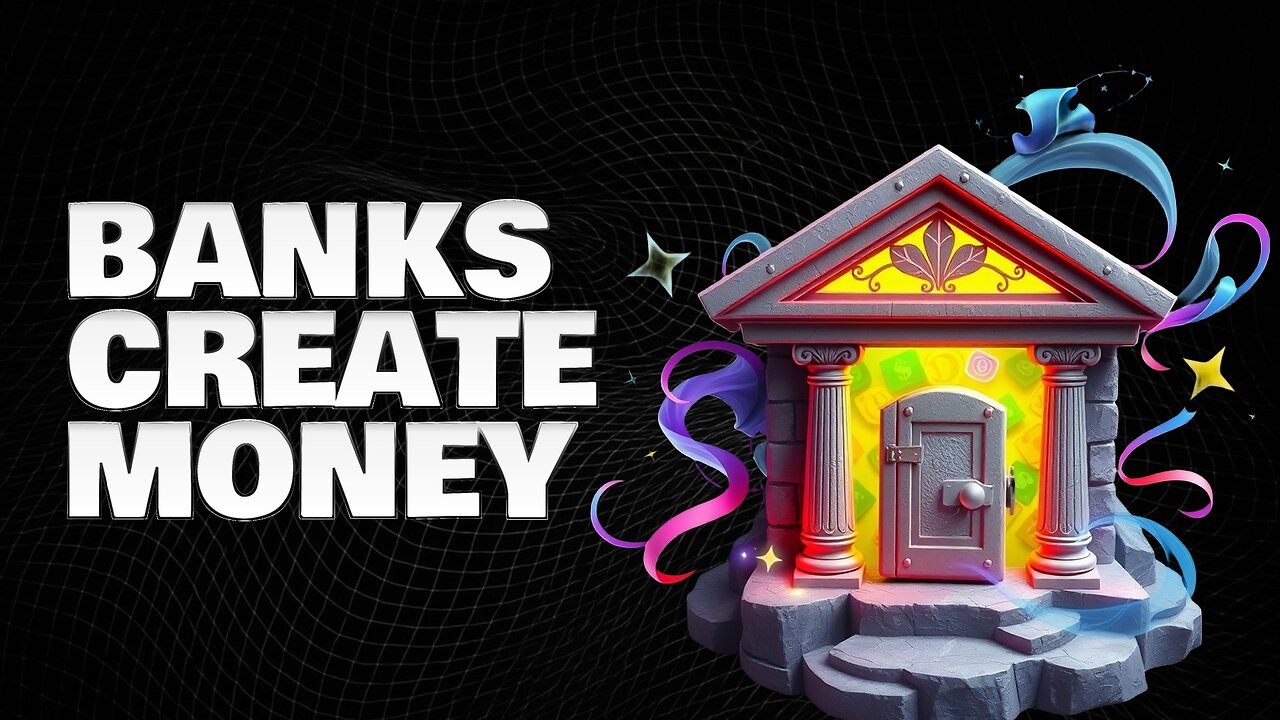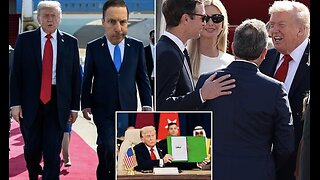Premium Only Content

How Banks Magically Create Money | Finance
Title: How Banks Magically Create Money | Finance
Description:
In the realm of finance, one of the most intriguing and often misunderstood processes is how banks create money. This phenomenon, often referred to as "money creation," is a fundamental aspect of modern banking and plays a crucial role in the economy. The process begins with the concept of fractional reserve banking, where banks are required to hold only a fraction of their deposit liabilities in reserve.
When a bank receives a deposit, it doesn't keep the entire amount in its vaults. Instead, it lends a significant portion of that money to borrowers. For example, if a bank receives a deposit of $100,000 and has a reserve requirement of 10%, it only needs to keep $10,000 in reserve. The remaining $90,000 can be lent out. This lending creates new money in the economy because the borrower now has $90,000 to spend, while the original depositor still has access to their $100,000 deposit.
The magic of money creation doesn't stop there. When the borrower spends the $90,000, the recipient of that money may deposit it back into the banking system, either in the same bank or a different one. This new deposit can then be used to create even more loans, continuing the cycle of money creation. This multiplier effect means that the initial $100,000 deposit can lead to the creation of significantly more money in the economy.
However, this process is not without risks. If too many depositors decide to withdraw their money at the same time, the bank may face a liquidity crisis, as it may not have enough cash on hand to meet all withdrawal requests. This is why central banks, such as the Federal Reserve in the United States, play a crucial role in regulating and supervising the banking system to ensure stability.
Understanding how banks create money is essential for grasping the broader economic landscape. It impacts everything from interest rates to inflation and economic growth. By controlling the money supply, central banks can influence economic activity, making money creation a powerful tool in monetary policy.
In conclusion, the process of money creation by banks is a complex and fascinating aspect of finance. It involves the interplay of deposits, loans, and regulatory frameworks, all of which contribute to the overall health and stability of the economy.
Tags:
Fractional Reserve Banking, Money Creation, Banking System, Economic Growth, Monetary Policy, Central Banks, Liquidity Crisis, Financial Stability, Money Supply, Interest Rates
-
![[Ep 772] No Kings for Weak Minds: Funding & Following | CA Homelessness: Crisis & Scandal](https://1a-1791.com/video/fww1/d8/s8/1/g/j/B/r/gjBrz.0kob-small-Ep-772-No-Kings-for-Weak-Mi.jpg) LIVE
LIVE
The Nunn Report - w/ Dan Nunn
1 hour ago[Ep 772] No Kings for Weak Minds: Funding & Following | CA Homelessness: Crisis & Scandal
178 watching -
 1:18:31
1:18:31
The Culture War with Tim Pool
4 hours agoTim Pool Vs. Liquid Death CEO DEBATE
91.2K115 -
 LIVE
LIVE
Times Now World
18 days agoLIVE Jeffrey Sachs | Netanyahu Turned U.S. Military Into His Own War Machine | Times Now World
36 watching -
 LIVE
LIVE
ahdedazs
53 minutes agoARC Raiders Playtest! *Multistreaming*
14 watching -
 1:58:33
1:58:33
The Quartering
3 hours agoCrowder Roasts Entitled Black Man, Hasan Piker Meltdown, Leftoid Instant Regret!
25K34 -
 1:03:29
1:03:29
DeVory Darkins
4 hours ago $30.29 earnedKash Patel drops DEVASTATING NEWS for Democrats as ANTIFA suffers MAJOR LEGAL BLOW
69.1K105 -
 59:37
59:37
Jeff Ahern
2 hours agoFriday Freak out with Jeff Ahern
10.3K2 -
 1:14:56
1:14:56
Lara Logan
14 hours agoTHE ONLYFANS SCAM: Victoria Sinis Breaks Down the Dangers and Lies Targeting Your Children | EP 40
47.4K9 -
 3:02:51
3:02:51
Tundra Tactical
22 hours ago $0.28 earned{LIVE NOW} GunTuber Plays Battlefield 6...Terribly
11K3 -
 40:50
40:50
The White House
4 hours agoPresident Trump Participates in a Bilateral Lunch with the President of Ukraine
28.8K24